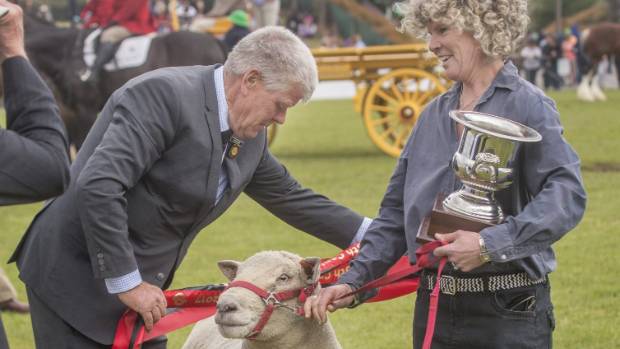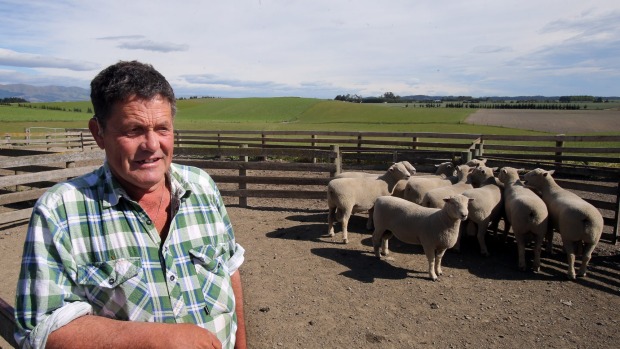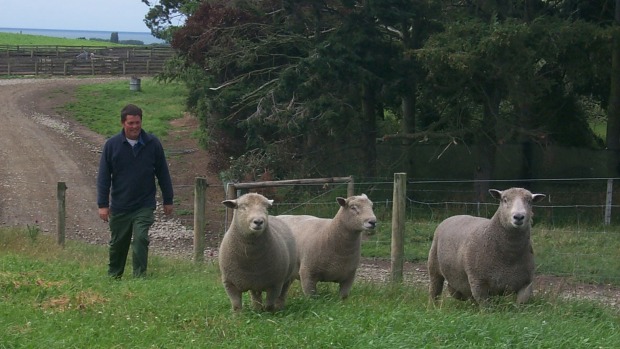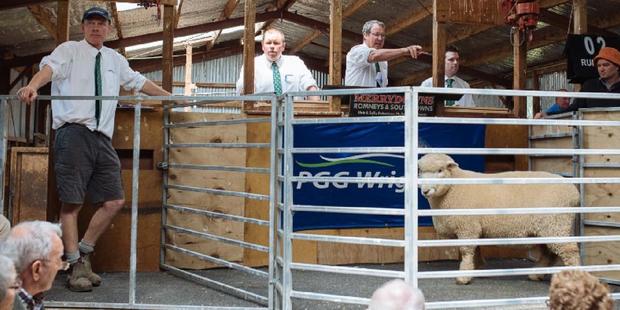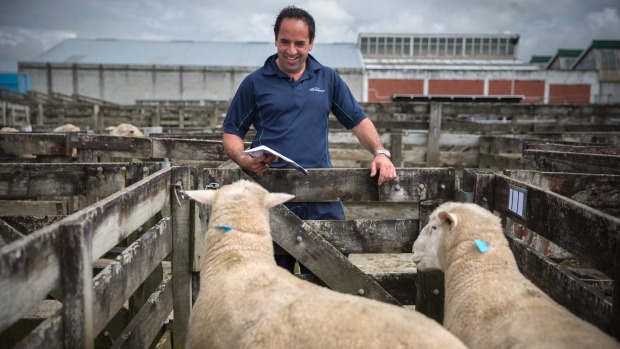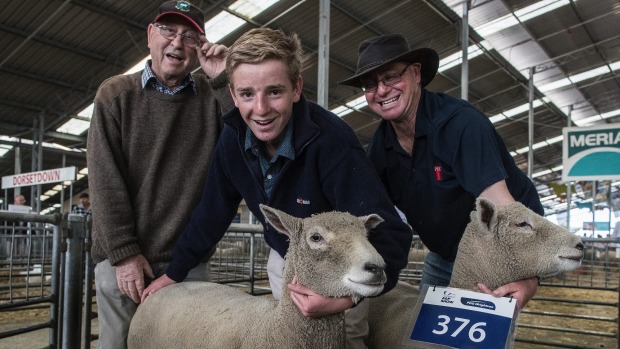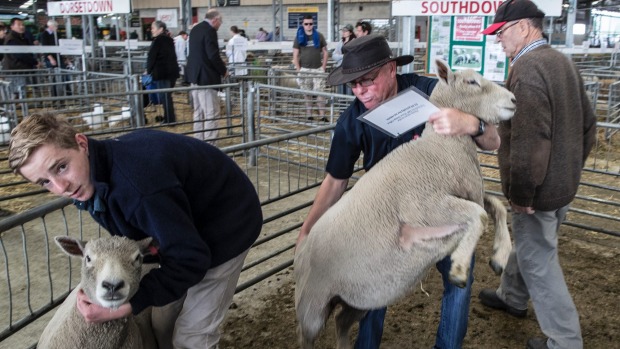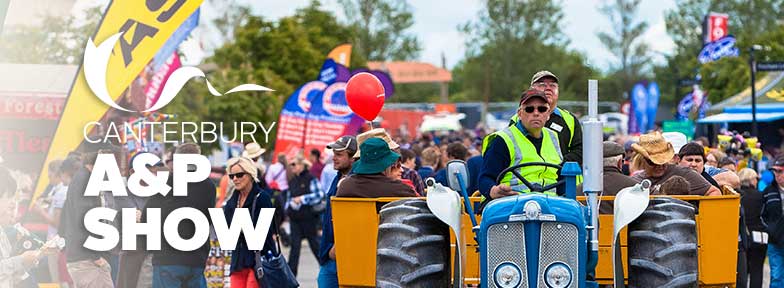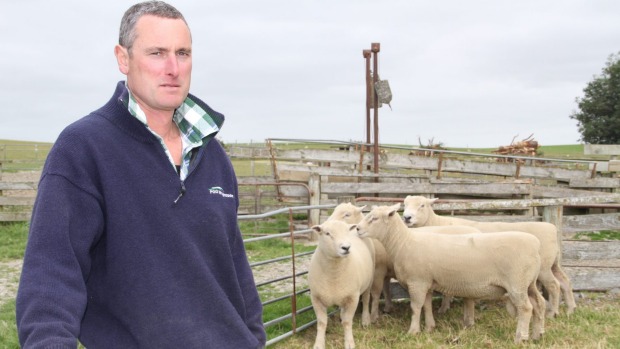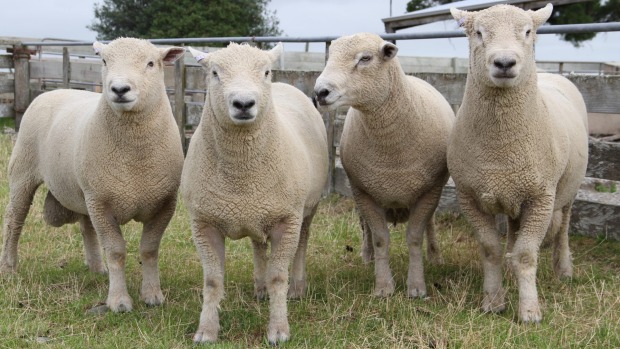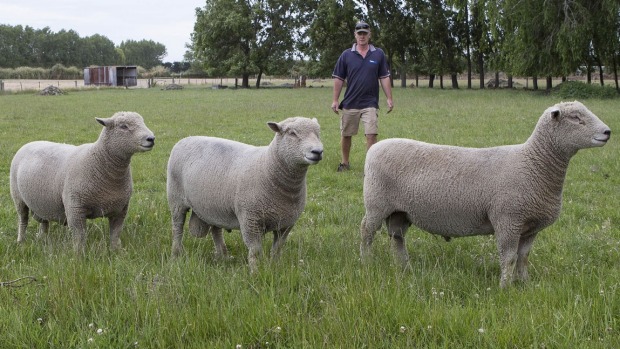
SCAN FAN: Canterbury farmer Brent Macaulay is a fan of CT scanning to get the most out of his southdowns. The ram had a CT scan as a ram hogget that helped to get an accurate reading of its internal as well as external virtues.
A Canterbury ram stud breeder has become a convert to CT scanning after selling a southdown ram for $14,000.
Brent Macaulay, from Maclaka stud, Lincoln, was one of two breeders to take the top price honours, with Chris Medlicott’s ram from his Clifton Downs Southdown stud sharing the same price, at the Canterbury A&P Association’s Elite Ram and Ewe Sale last month.
Both breeders sent their sires through a Lincoln University CT scanner as ram hoggets to examine their bone and muscle composition.
Macaulay was so impressed that he will be sending another five or six rams with sires from other southdown breeders for CT scanning in February or March.
He said the results confirmed his thoughts the ram would do well at the sale.
“I thought carcass-wise he was hard to fault and cat scanned him as a ram hogget and he cat scanned well.
“He had the scanning data to meet the eye appraisal which I thought was good hindquarters and loin and that came through the cat scanning as well as being structurally sound.
“I used it for the first time last autumn and now I’m a convert and will use it on my top guys every year. I’m really loving the cat scanning, it’s magnificent and great for the stud breeding industry,” Macaulay said.
Macaulay also CT scanned a ram he thought would be another top animal to find after the results that it had a fat layer not visible to the eye.
The ram, with a 56 per cent carcass yield, will be sold as a flock ram after being ruled out as a top sire animal.
However, the CT scanning backed up the promising traits of Maclaka 14 with a 62 per cent carcass yield which was sold for top money to Blair Robertson, of Merrydowns stud near Gore.
Macaulay said his goal was to build on the CT scanning benchmark set by the ram.
The ram breeder was still recovering from the bidding flush for Maclaka 14 and was taken aback when another of his southdown sires sold for $3800 to ex- lamb drafter Paul Ross, from Mayfield.
Macaulay runs a small stud operation of about 35 ewes on eight hectares in between running a scanning business in the winter and managing the stock at PGGWrightson’s feed research farm near Lincoln. Setting up his stud in 1995, ewes were outsourced initially from Canterbury studs until he built up a base for home breeding.
The sire for Maclaka 14 came from an Australian ram that caught the eye of his father, John, during a southdown tour. John bought the ram a few years ago in partnership with an Australian farmer and sent semen home for his own stud outside of Timaru.
The father and son team often use the same sire line.
Macaulay was sorely tempted to keep Maclaka 14, but its bloodlines were getting a bit cramped at his small operation.
Instead, he reinvested some of its earnings in a small share of Medlicott’s $14,000 ram sold to David Gillespie, whose stud is near Oxford, and John Jebson, at Charing Cross.
Macaulay managed to come to an after-sale arrangement with Gillespie after a syndicate including himself and his dad missed out on the bidding.
“He ended up being a little steep for us and we were bidding on him and he got to $9000 and that was me out, but I managed to chat to the guy who bought him and he offered me a small share,” Macaulay said.
“We are reinvesting into what I thought was the other good ram for the day.”
Meanwhile, Maclaka 14 will be put to good use by Robertson, who plans to put him over 300 ewes at his big stud operation.
Macaulay remains hopeful that in coming years he might be able to call on Robertson for one of its sons to retain its top bloodline in his own stud.
The sale’s $1782 average price per ram fell again this year, down from $1867, and the average ewe price was $234, down from $287, for total sales of $286,725.

